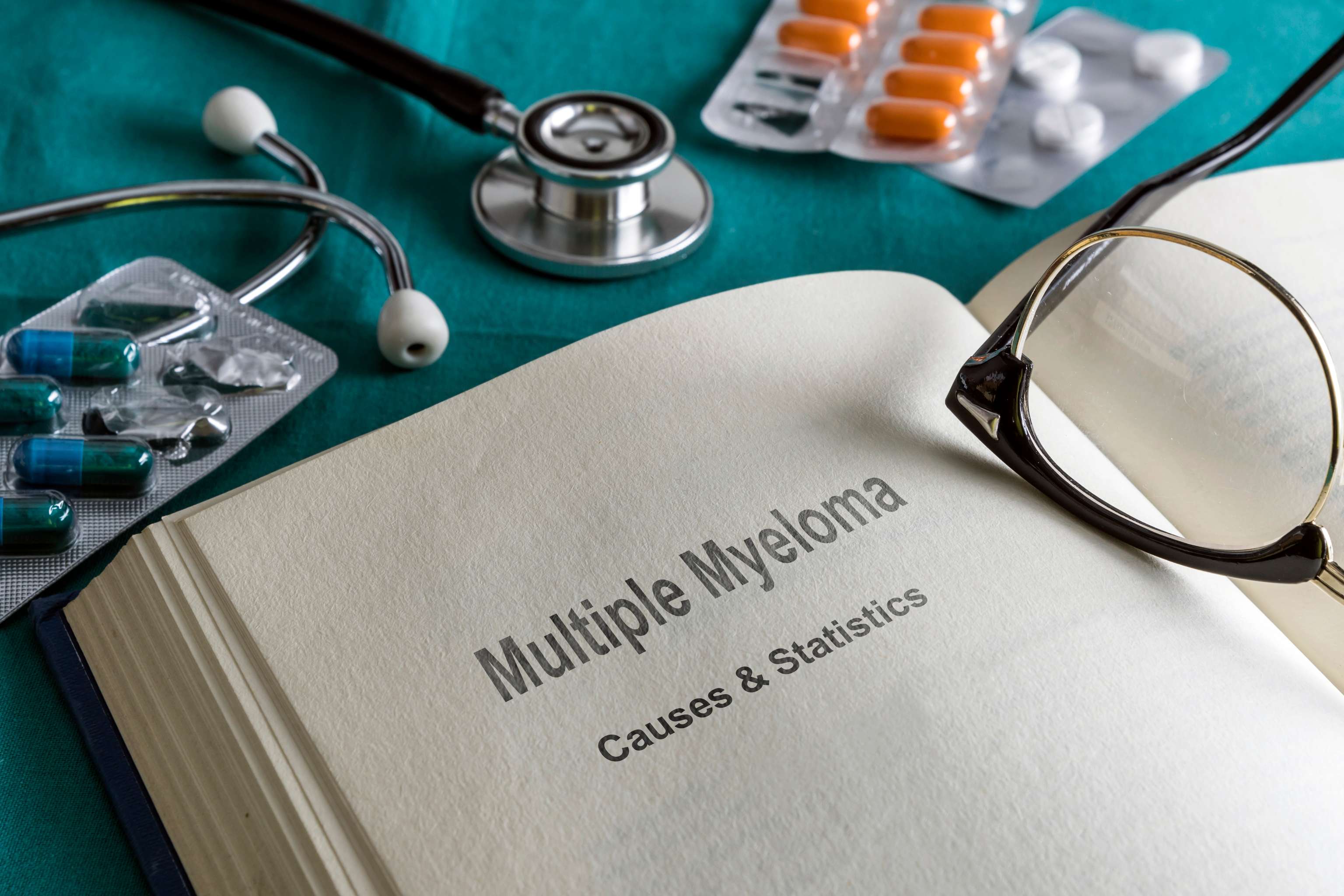Possibility of a new form of therapy for multiple myeloma

Multiple myeloma in more detail:
A plasmocytoma, or multiple myeloma, is a specific type of blood cancer in which human plasma cells in the bone marrow divide uncontrollably. The bone marrow results in the production of red and white blood cells, which have different functions. Red blood cells, also known as erythrocytes, are responsible for transporting oxygen and white blood cells, also known as leukocytes, are produced in the bone marrow for immune defence. In this context, so-called T- or B-cells belong to the subgroups of leukocytes. Plasma cells represent the mature stage of these B cells and serve to produce antibodies. Due to the uncontrolled multiplication of these plasma cells, the immune system is weakened and various symptoms can develop. In the initial stage of cancer in the bone marrow, no symptoms are usually apparent. As the disease progresses, multiple myeloma can cause a variety of symptoms, including back pain, anemia, antibody deficiency, kidney damage, or small skin bleeding.
Association of Research-Based Pharmaceutical Companies:
The Association of Research-Based Pharmaceutical Companies expects a quarter of new drugs in 2021 to target different cancers, with two new T-cell therapies possible to treat multiple myeloma, it said. Idecabtagen vicleucel could find approval in multiple myeloma therapy in 2021. One agent already approved for treatment is isatuximab, which is used in combination with pomalidomide and dexamethasone (has an anti-inflammatory effect).
A Phase 2 study published in December 2020 now evaluated the efficacy of combination therapy with the cancer drug melflufen and dexamethasone in multiple myeloma, which is a population with an important unmet medical need.
Phase 2 Study Method:
While previous lines of therapy have introduced new combinations of antimyeloma drugs, patients with relapsed (i.e., recurrent at intervals) and refractory (i.e.multiple myeloma (RRMM for short) often suffer from disease that is refractory to multiple drugs. Therefore, drugs with new mechanisms of action are urgently needed. In combination with dexamethasone, melflufen could potentially address this unmet medical need by providing a novel mechanism of action, clinically meaningful efficacy and safety in patients with the cancer.
The multicenter Phase 2 trial, published in the Journal of Clinical Oncology, enrolled patients at 17 sites from December 2016 to October 2019. Study participants had a prior diagnosis with multiple myeloma, and measurable disease at study entry. Previously, participants had to have received at least two therapies and had to be insensitive to certain antibodies (i.e., anti-CD38 antibodies). These patients received 40mg of melflufen intravenously on the first day of each 28-day cycle and an additional 40mg of dexamethasone by oral administration once weekly. Here, the primary endpoint of the study was the verified overall response rate to the drugs. Secondary endpoints were: Duration of response, patient survival and safety.
Results:
Of 157 patients with a mean age of 65 years and five prior therapies, 55 patients (35%) had extramedullary disease (i.e., outside the bone marrow). The overall response rate was 29% among those treated, while the median duration of response was 5.5 months and median survival was 4.2 months and overall survival was 11.6 months with a follow-up of 14 months.
Treatment-related adverse events occurred in 96% of patients:
- Neutropenia at 79% (i.e. decrease in white blood cell count).
- Thrombocytopenia with 76% (i.e. lack of platelets in the blood)
- anaemia with 43
Pneumonia (10%) was the most common non-hematological (i.e. diseases of the blood) event.
Conclusion:
According to the study, combination therapy melflufen and dexamethasone demonstrated clinically meaningful efficacy and manageable safety in patients with heavily pretreated RRMM. As this is a phase 2 trial, it remains to be seen whether this novel form of therapy can be confirmed in further studies and significantly help people who are now insensitive to certain drugs due to previous treatments.
Active ingredients:
Sources
- Paul G. Richardson, MD1; Albert Oriol, MD2; Alessandra Larocca, MD, PhD3; Joan Bladé, MD, PhD4; Michele Cavo, MD5; Paula Rodriguez-Otero, MD, PhD6, et al. Melflufen and Dexamethasone in Heavily Pretreated Relapsed and Refractory Multiple Myeloma. Journal of Clinical Oncology. December 09, 2020. DOI: 10.1200/JCO.20.02259
- Full data set of Oncopeptides phase 2 HORIZON study in multiple myeloma published in the Journal of Clinical Oncology
- Plasmozytom (Netdoktor)
- Diagnostik und Therapie des Multiplen Myeloms (Ärzteblatt)
- Was kommt an neuen Arzneimitteln? (Deutsches Ärzteblatt)

Danilo Glisic
Last updated on 22.03.2021
Your personal medication assistant
Browse our extensive database of medications from A-Z, including effects, side effects, and dosage.
All active ingredients with their effects, applications, and side effects, as well as the medications they are contained in.
Symptoms, causes, and treatments for common diseases and injuries.
The presented content does not replace the original package insert of the medication, especially regarding the dosage and effects of individual products. We cannot assume liability for the accuracy of the data, as the data has been partially converted automatically. Always consult a doctor for diagnoses and other health-related questions.
© medikamio